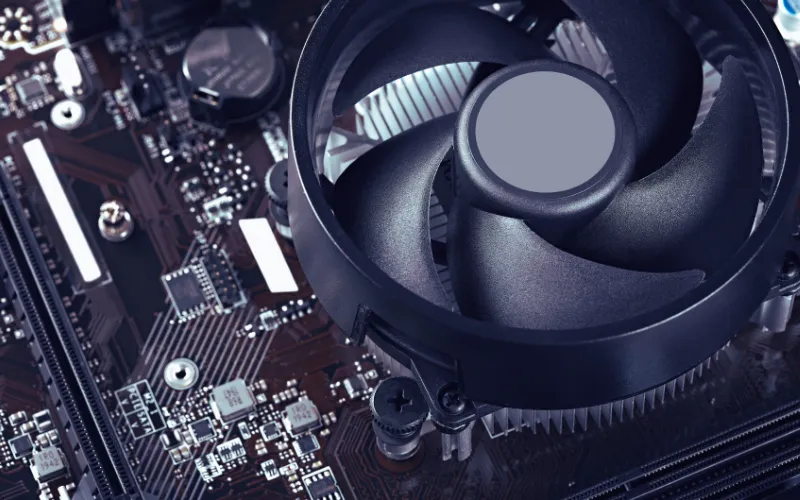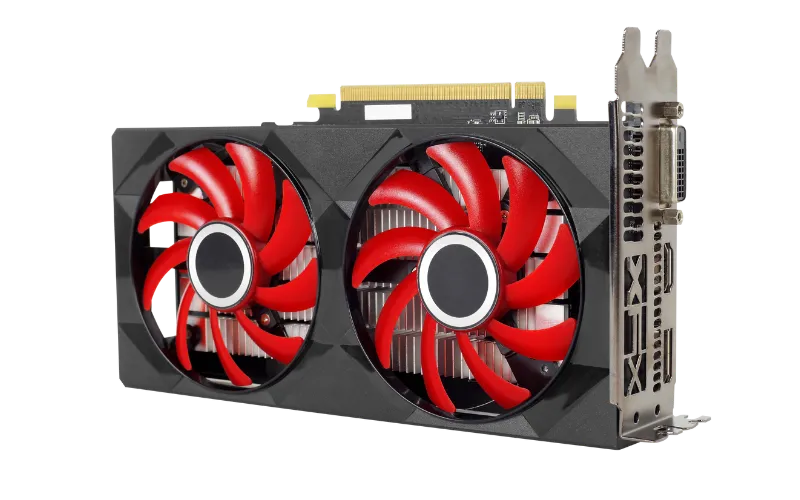Graphics Processing Units (GPUs) are the powerhouse behind the vivid and immersive visuals in modern digital experiences, from gaming and virtual reality to professional graphics design and video editing. However, like any sophisticated technology, GPUs can encounter issues, including the appearance of “GPU artifacts.”
This article thoroughly explores GPU artifacts, covering their causes, how to fix them, and preventive measures to ensure your GPU continues to deliver optimal performance.
What Are GPU Artifacts?
GPU artifacts are unexpected and abnormal visuals displayed on a computer screen that originate from problems within the Graphics Processing Unit (GPU). Software glitches do not cause them but are direct manifestations of hardware-related issues in the GPU.
Understanding the nature and variety of these artifacts is essential for diagnosing and addressing GPU problems.

Types of GPU Artifacts
GPU artifacts can manifest in various forms, each indicating a different type of issue:
- Screen Glitches: These include random lines, dots, or shapes appearing on the screen. They often look like static or noise and can be sporadic or constant.
- Texture Corruption: Here, in-game textures may appear stretched, blurred, or completely wrong. This can result in strange visual effects like walls or characters in video games displaying incorrect colors or patterns.
- Color Distortion: This involves colors appearing incorrectly. For example, a blue object might be displayed as green or red.
- Flickering or Strobing: The screen may flicker, flash, or strobe, which can be distracting and is often a sign of a sync issue between the GPU and display.
- Crashing or Freezing: In severe cases, GPU artifacts can lead to system instability, causing your computer to crash or freeze.
Causes of GPU Artifacts
Understanding what causes GPU artifacts is key to addressing the problem:
- Overheating: Excessive heat is the most common cause of GPU artifacts. GPUs that overheat can malfunction, leading to visual distortions.
- Overclocking: Pushing the GPU beyond its designed performance parameters can lead to instability and artifacts. This is especially true if the cooling system cannot handle the extra heat generated.
- Driver Issues: Drivers act as the intermediary between your GPU and the rest of your system. Outdated, corrupt, or incompatible drivers can cause various issues, including artifacts.
- Hardware Failure: Long-term wear and tear, manufacturing defects, or physical damage can lead to hardware failure. This includes problems with the GPU chip, memory, or other components on the graphics card.
- Power Supply Problems: Inadequate or fluctuating power supply can cause the GPU to behave erratically, leading to artifacts.
How to Fix GPU Artifacts
Cooling Solutions
Adequate cooling is vital for a healthy GPU. Dust accumulation can impede airflow and insulate components, leading to higher temperatures. Regular cleaning of fans and heat sinks is essential. For more advanced solutions, consider:
- Upgrading Cooling Systems: Invest in higher-quality cooling solutions such as aftermarket coolers or liquid cooling systems, especially if you run high-performance tasks or live in a warmer climate.
- Optimizing Airflow in Your Case: Reorganize cables and components for better air circulation. Adding case fans can also help maintain a cooler environment inside your PC.

Adjusting Clock Speeds
Overclocking can enhance performance, but it also increases the risk of artifacts. To address this:
- Reset Overclocked Settings: Use software like MSI Afterburner to revert your GPU to its original clock speeds.
- Stress Testing: After adjusting clock speeds, use stress testing software like FurMark or 3DMark to ensure stability at the new settings.
Updating Drivers
Outdated or corrupted drivers are a common cause of GPU artifacts. To update them:
- Visit the Manufacturer’s Website: Download the latest drivers from the GPU manufacturer’s website. NVIDIA, AMD, and Intel regularly update their drivers.
- Clean Installation: When installing new drivers, opt for a ‘clean install,’ which removes old drivers before installing new ones.
Checking Hardware
Physical inspection and testing are crucial:
- Inspect for Physical Damage: Look for signs of damage like burnt components or broken solder joints.
- Reseat the GPU: Remove and then carefully reinsert the GPU in its PCI slot to ensure a proper connection.
- Check Power Supply: Ensure your PSU delivers adequate and stable power to the GPU. A failing PSU can cause artifacts.
Other Solutions
- Reduce In-Game Settings: Lowering the graphics settings in games can reduce the strain on your GPU.
- Use Integrated Graphics: If your CPU has integrated graphics, switch to them temporarily to see if the issue persists. This can help determine if the problem is GPU-specific.
Preventative Measures
Preventing GPU artifacts often involves proactive measures:
- Regular Cleaning: Keep your PC internals free from dust and debris.
- Adequate Ventilation: Ensure your PC case has enough ventilation and is placed in a well-ventilated area.
- Monitor GPU Temperature: Use software like GPU-Z to keep track of your GPU’s temperature.
- Quality Power Supply: A good PSU ensures consistent power delivery, critical for GPU health.
Conclusion
While GPU artifacts can be concerning, understanding their causes and how to address them can help ensure your graphics hardware continues operating smoothly. Regular maintenance, proper cooling, and updating software are key preventative measures.
If you experience persistent artifacts, it may be time to consult a professional to assess whether your GPU needs repair or replacement.
Frequently Asked Questions
Can GPU artifacts be fixed permanently?
Yes, in many cases, especially if the cause is overheating or driver-related. However, hardware failures may require component replacement.
Are GPU artifacts a sign of a dying GPU?
Not always, but they can be an early warning sign. It’s important to address the underlying issue as soon as possible.
How can I differentiate between a GPU artifact and a software glitch?
GPU artifacts are usually consistent across different applications and persist after rebooting, unlike software glitches, which are typically app-specific or resolve after a restart.





